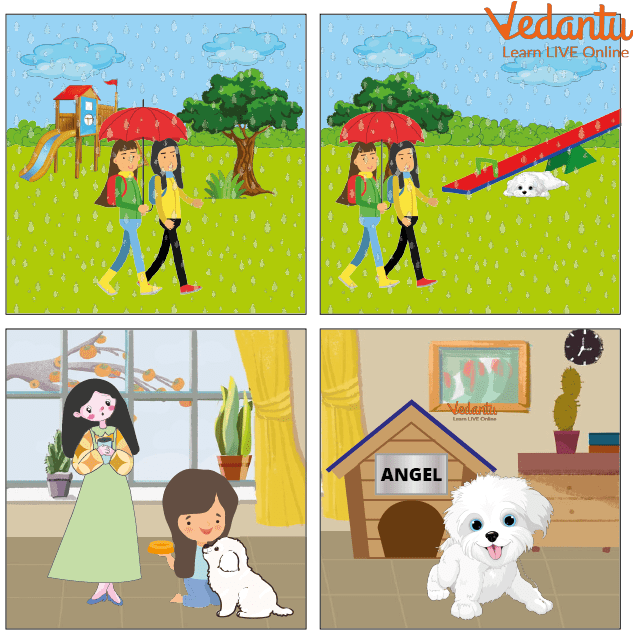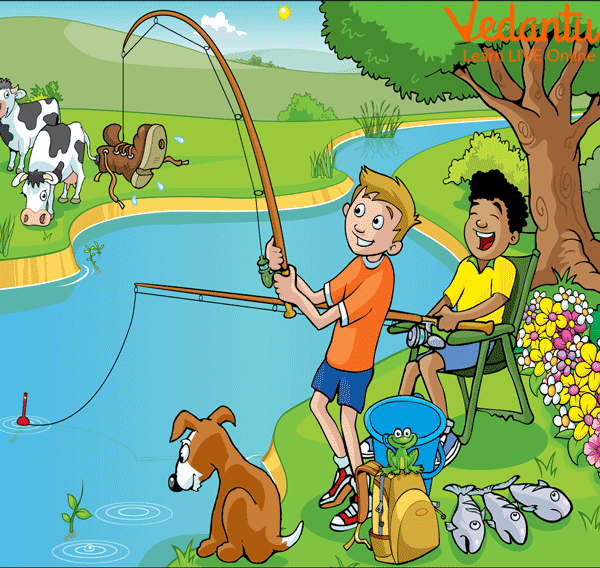




How to Describe, Analyze, and Interpret Pictures in Exams
Picture comprehension is an activity by which students can easily translate sign language into words. Children look at pictures, discover details, and then respond to questions about the image as part of a picture comprehension activity.
These questions are on the who, what, where, when, and why. Through picture comprehension, children can improve their picture reading and writing habits. It is a fun way to inspire children to read and increase their ability to understand.
They can begin to comprehend how to continue reading by using simple sentences to describe what is visible or occurring in the picture. It prepares them for questions and more difficult texts.
Importance of Picture Comprehension
Picture comprehension is one of the most important activities for kids.
1. Improve Thinking Capability
Kids see the image and observe the things shown in the picture and think about how they can answer the question. It can improve thinking capability.
2. Building Reading Skills
Picture comprehension builds the reading skills as children read the description, questions, and little details about the picture.
3. Improve Writing and Vocabulary Skills
In the picture comprehension activity, children have to answer the questions in writing. By doing this, they can improve their writing skills as well as vocabulary.
Things to Remember while Observing the Picture
If we remember the below tips, we can observe the picture more efficiently and can give the answers properly.
You should focus on every little thing.
Observe all the activities carefully that are done in the picture.
Read the questions carefully.
See the picture again and again for evidence.
Answer the questions properly.
Here are Two Activities for Practice
1. Story picture composition for kids: In this activity, observe and write a story with the help of a picture and answer the question carefully.
a. Translate the above picture into a short story.

Garden
Ans. One day, two ladies were walking in the garden. Suddenly it's raining in the garden. They saw a little puppy unconscious and wet. The dog was shivering in the rain. Two ladies immediately take this puppy in their arms and take him to their home. Serve him food and water. Take care of him and protect the little puppy from the rain. This story teaches us about kindness.
b. What are the two ladies doing in the garden?
Ans: The two ladies were walking in the garden.
c. Why did two ladies take the dog to their home?
Ans: Two ladies took the dog to their home because it was raining and the dog was in an unconscious condition. He was shivering and wet. They took care of the dog.
2. Picture reading activity: Pictures can be a fun and easy way to help kids develop their skills. students can concentrate on developing their comprehension skills rather than getting stuck down in the phonics or translation aspects of reading. We read the tips to read the picture. Here is a practice example of picture comprehension.

Gone Fishing
We can translate this picture in words like this:
There are three fishes on the grass.
There is a frog in a blue bucket.
One of the boys is laughing.
There are some flowers behind the boys.
There are two trees.
The dog is in the river.
Summary
Children's picture reading and writing skills can be enhanced through picture comprehension. It is a fun approach to encourage kids to read and improve their comprehension skills. By describing what is seen or happening in the picture in short terms, they can start to understand how to continue reading. It gets students ready for tests and harder texts.
FAQs on Picture Comprehension Introduction: Essential Skills for Students
1. What is picture comprehension and why is it important for students?
Picture comprehension is the skill of understanding, interpreting, and explaining the information presented in a visual format, such as a photograph, drawing, or diagram. It is a fundamental exercise in the CBSE curriculum for early grades because it builds crucial skills like:
Observation: Encourages students to notice small details.
Vocabulary Expansion: Helps associate words with visual objects and actions.
Inferential Skills: Teaches students to understand emotions, context, and unstated information.
Expression: Forms a base for describing scenes and telling stories.
2. What are the basic steps to follow for effective picture comprehension?
To effectively understand a picture, students can follow a simple five-step process:
Observe Overall: First, get a general sense of the picture. Identify the main subject, the setting (e.g., a park, a room), and the primary activity taking place.
Identify Key Details: Look closer for specific objects, characters, colours, and textures. Note the number of people, their expressions, and what they are doing.
Infer and Interpret: Think about the story. What might have happened before this moment? What could happen next? Why are the characters feeling a certain way? This is where you go beyond just seeing.
Structure Your Thoughts: Organise your observations logically. You might describe the background first, then the foreground, or focus on the main character and then their surroundings.
Describe and Articulate: Use clear and descriptive language to explain what you have observed and inferred, either by writing it down or speaking about it.
3. How does practising picture comprehension improve English language skills?
Practising picture comprehension directly enhances several core English language skills. It serves as a bridge between seeing and writing, improving sentence construction by encouraging students to form coherent sentences about what they observe. It boosts vocabulary by prompting them to find the right words for objects, actions, and feelings. Most importantly, it lays the groundwork for creative writing and the ability to write a Descriptive Essay by teaching students how to translate visual details into vivid written descriptions.
4. What is the key difference between picture comprehension and picture composition?
The key difference lies in the direction of the task. Picture comprehension is an interpretive skill; it is about understanding and explaining a given image (input). You analyse what is already there. In contrast, picture composition is a creative skill; it involves writing a story or description based on a visual prompt (output). While comprehension focuses on answering questions about a picture, composition requires you to build a narrative from it.
5. Beyond just describing an image, what deeper thinking skills does picture comprehension develop?
Picture comprehension goes far beyond simple description and nurtures several higher-order thinking skills (HOTS). It trains students in inferential reasoning—the ability to deduce information that isn't explicitly shown, such as a character's motive or the time of day based on shadows. It also develops critical thinking by encouraging students to question why certain elements are included in the picture and what message the creator might be conveying. Finally, it builds skills in prediction and sequencing, as students often have to guess what came before or what will happen next.
6. Can the skills learned from picture comprehension be applied in other subjects besides English?
Absolutely. The skills are highly transferable. In Science, students use these skills to interpret diagrams of biological processes, lab setups, and food webs. In Social Studies, they are essential for reading maps, analysing historical photographs, and understanding timelines. In Mathematics, picture comprehension helps in interpreting word problems with diagrams and understanding the Graphical Representation of Data like bar charts and pie charts. It is a foundational skill for all visual learning.
7. What kinds of questions are typically asked in a picture comprehension exercise?
Questions in a picture comprehension exercise, like those found in NCERT Solutions for Class 1 English Mridang Chapter 6, are designed to test different levels of understanding:
Direct Questions: These are based on direct observation. (e.g., 'How many birds are in the sky?', 'What colour is the car?')
Inferential Questions: These require you to deduce information. (e.g., 'Why do you think the girl is crying?', 'What season is it?')
Vocabulary Questions: These ask you to identify or name objects. (e.g., 'Find an object that starts with the letter 'B'.')
Creative and Evaluative Questions: These encourage imagination and opinion. (e.g., 'What title would you give this picture?', 'What do you think will happen next?')















